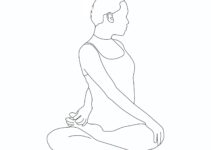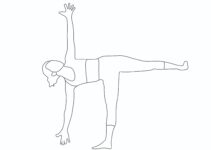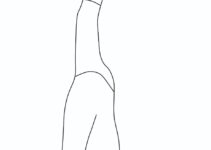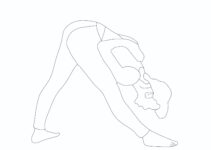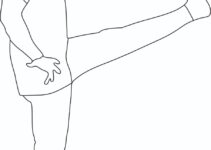The mechanics of breathing
Consider the lungs to be two very flexible and strong bags that can be inflated or deflated as air flows in or out of them during inhalation and exhalation respectively. The lungs are surrounded at the top and sides by the thorax or the rib cage, and at the bottom by the diaphragm. The diaphragm separates the abdomen from the lungs. The lungs are not fixed to the diaphragm or the rib cage but they nevertheless closely follow any change in shape of this enclosure. If the ribs expand and the diaphragm moves downwards, the created vacuum is normally taken by the lungs by expanding. In this way air is drawn into the lungs and inhalation takes place. Similarly, when the ribs contract and the diaphragm moves upwards due to the release of muscular contraction, then the lungs are squeezed. This pushes air out of the lungs. Exhalation takes place. This is the operation of breathing. The more the lungs are expanded and contracted, the deeper will be the breathing.

10 Yoga for lungs strengthening
- Ustrasana: Shallow breathing is often caused by the inflexibility of the ribcage. Ushtrasana expands the ribcage and the associated muscles are made more supple. As a result, deeper breathing is facilitated.
- Matsyasana: Matsyasana gives an excellent massage of the abdominal organs. The ribcage and lungs are given an accentuated stretch which helps to improve the breathing process by allowing the chest to expand to full capacity during respiration.
- Bhastrika pranayama: Bhastrika pranayama opens up the air cells of the lungs. Germs, mucus, and possibly stagnant air are eliminated from the lungs. All the air cells are cleaned and rejuvenated from top to bottom, which leads to an increased transfer of oxygen through the cell membranes and allows better removal of waste carbon dioxide from the body. The pranayama purifies the lungs. This makes it a very useful technique for combating ailments such as asthma, tuberculosis, pleurisy, and bronchitis.
- Kapalbhati: Kapalbhati cleans out the lungs. It improves their elasticity and makes oxygen-carbon dioxide exchange more efficient. The practice of this respiratory process may be useful in making respiratory muscles stronger, as well as improving the general tone of the lungs.
- Marjariasana: While practicing marjariasana, try to expand your abdomen fully to fill the lungs with the maximum amount of air. Then raise your back upwards, while lowering the head and breathing out. This helps to expand and contract the lungs muscles and good for its cleaning and strengthening.
- Makarasana: While performing the yoga pose, the chest is expanded allowing an increased amount of air to enter the lungs, which is a great help in alleviating congestion and other ailments of the respiratory system.
- Nadishodhan Pranayama: The pranayama helps to exchange gases uniformly to each and every part of the lungs cells and accordingly to the entire body. It strengthens the lungs muscles and helps to gain control over the diaphragm movement. It also strengthens the immune system.
- Trikonasana: Trikonasana and its variations allow for the easier passage of air to the lungs and even to the alveoli. All these help to open and expand the chest cavity. The regular practice of it also helps to flux out the toxins and strengthening of muscles.
- Setubandhasana: The yoga pose is quite effective for those who are suffering from any respiratory problems. The bridge pose provides adequate stretching in the chest or lungs region, which will help in expanding lungs thereby preventing you from respiratory problems.
- Bhujangasana: The cobra pose ensures chest expansion and optimal lungs stretching thereby helpful in expanding of lung’s internal region. The expansion of the lungs capacity ensures to prevent asthmatic attacks and other respiratory disorders.
Role of pranayama for lungs
Pranayama is not only impacted the lungs and respiratory system, in fact, it is beneficial for circulatory, digestive, and endocrine systems too. Pranayama ensures more oxygen to the lungs and good for the entire body. The breathing process tones up the lungs and kumbhaka or retention of breath helps the supply of oxygen or exchange of oxygen and carbon dioxide thus facilitates better work of lungs. Deep breathing ensure more oxygen enriching blood with more oxygen and thus leading to more efficient work of the respiratory system. It also helps to improve the capacity of the lungs.

